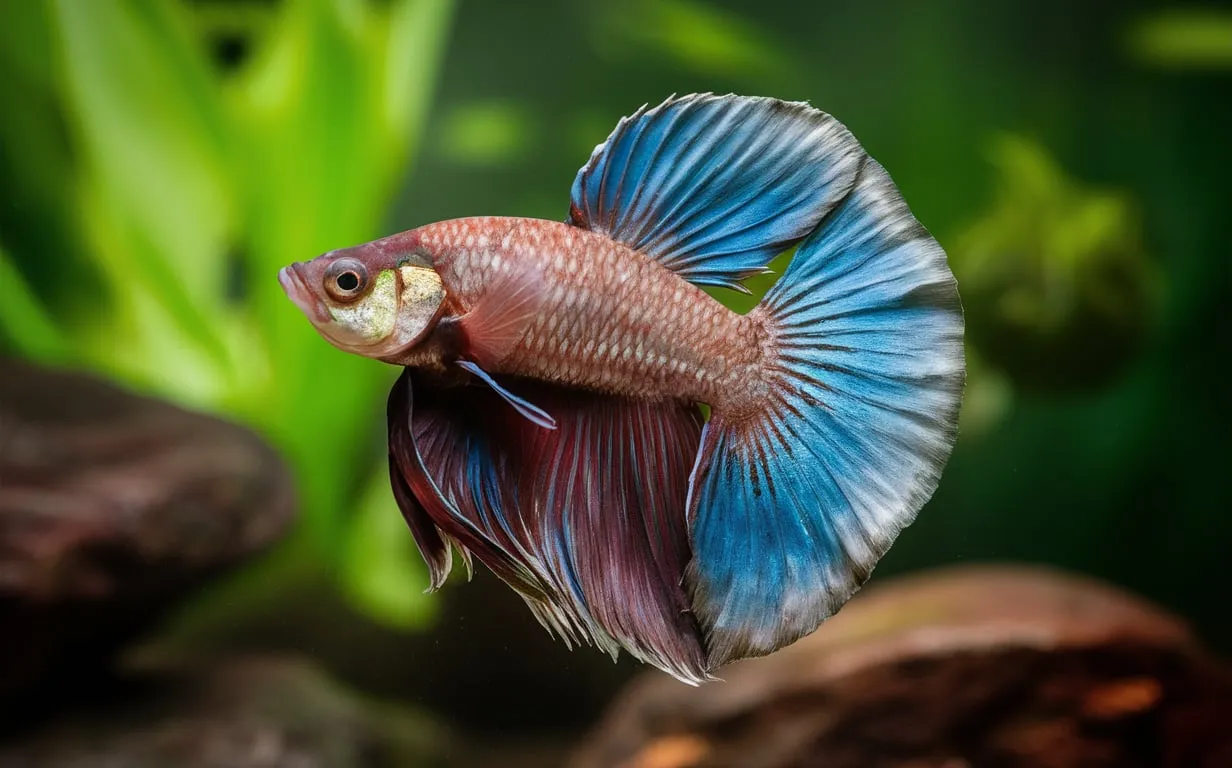Wasting disease is a serious health issue that can affect various species of fish, including popular aquarium fish like Betta Fish. This condition, also known as “skinny disease” or “emaciation syndrome,” is characterized by the gradual deterioration of the fish’s body condition, often leading to significant weight loss and eventual death if left untreated.

Causes of Wasting Disease Fish
The primary causes of wasting disease in fish can be attributed to several factors:
Nutritional Deficiencies
Inadequate or imbalanced nutrition can contribute to the development of wasting disease. Fish require a proper diet that provides the necessary proteins, fats, carbohydrates, vitamins, and minerals to maintain their health.
Parasitic Infections
Certain parasites, such as Hexamita , can invade the fish’s digestive system and interfere with nutrient absorption, leading to wasting.
Bacterial Infections
Bacterial pathogens, including Flavobacterium columnare and Aeromonas , can also cause wasting disease by damaging the fish’s internal organs or impairing their ability to utilize nutrients effectively.
Environmental Factors
Poor water quality, overcrowding, and stress can weaken the fish’s immune system, making them more susceptible to wasting disease.
Symptoms of Wasting Disease in Fish
The primary symptom of wasting disease is a gradual loss of body condition, leading to a “skinny” appearance. Other common signs include:
- Lethargy and reduced appetite
- Pale or discolored skin
- Sunken eyes
- Protruding spine or ribs
- Ulcers or lesions on the skin
- Abnormal swimming behavior, such as listed to one side
Diagnosis and Treatment of Wasting Disease
Diagnosing wasting disease typically involves a combination of visual inspection, laboratory tests, and ruling out other potential causes. Veterinarians or experienced aquarium hobbyists may perform tests to identify any underlying infections or nutritional deficiencies.
The treatment for wasting disease usually involves addressing the underlying cause. This may include:
- Improving water quality and maintaining optimal environmental conditions
- Providing a nutritious, balanced diet
- Administering antiparasitic or antibiotic medications, if necessary
- Reducing stress through proper tank setup and care
It’s important to consult with a veterinarian or experienced aquarium specialist to develop an appropriate treatment plan for your fish.
Preventing Wasting Disease in Fish
To prevent wasting disease, it’s essential to maintain good aquarium management practices, including:
- Providing a well-balanced, high-quality diet
- Maintaining proper water quality through regular testing and water changes
- Quarantining new fish before introducing them to the main tank
- Reducing stress by avoiding overcrowding and ensuring appropriate tank size and decor
- Regularly monitor the fish for any signs of illness or changes in behavior
Can you explain how to improve water quality effectively?
Here are some effective ways to improve water quality:
- Water Filtration: Using water filters, either at the point of entry (eg whole-house filters) or point of use (eg pitcher or faucet-mounted filters), can remove contaminants like sediment, chlorine, lead, and microorganisms.
- Wastewater Treatment: Improving wastewater treatment processes, such as using advanced technologies like membrane bioreactors or ozonation, can help remove a wider range of pollutants before the water is discharged back into the environment.
- Source Water Protection: Protecting and managing the sources of drinking water, such as watersheds, aquifers, and surface water bodies, can prevent contamination in the first place. This includes reducing agricultural runoff, industrial discharges, and other sources of pollution.
- Infrastructure Upgrades: Investing in the maintenance and upgrade of aging water and wastewater infrastructure, such as water pipes, treatment plants, and storage tanks, can help prevent leaks, breaks, and other issues that can compromise water quality.
- Household Water Conservation: Reducing household water use through water-efficient appliances, fixtures, and behaviors can decrease the overall demand on water resources and the need for water treatment.
- Public Education: Educating the public about water quality issues, the importance of water conservation, and proper disposal of household hazardous waste can empower individuals to take actions that support improved water quality.
- Regulatory Compliance: Ensuring compliance with water quality regulations, such as the Safe Drinking Water Act and the Clean Water Act, can help maintain high standards for drinking water and surface water quality.
Implementing a combination of these strategies, tailored to the specific water quality challenges in a given region, can be an effective approach to improving water quality.
The Key Measures For Treating Wasting Disease In Ish:
Here are the key measures for treating wasting disease in fish:
1. Improve environmental conditions:
- Monitor and control water quality, temperature, and pH.
- Maintain appropriate oxygen levels and pH.
- Remove accumulated waste and pollutants.
2. Use antibiotics and medications:
- Antibiotics like oxytetracycline, erythromycin, and sulfadimethoxine to treat infections.
- Antifungal agents like malachite green and formalin to treat fungal infections.
3. Enhance the diet:
- Provide a nutritious and easily digestible diet.
- Supplement with essential vitamins, minerals, and nutrients.
4. Preventive measures:
- Vaccinate fish to boost their immune system.
- Isolate and treat sick individuals early.
- Control stocking density to avoid overcrowding.
Implementing these measures in a comprehensive manner can help reduce the incidence of the disease and improve the effectiveness of treatment for wasting disease in fish.
Conclution
By understanding the causes, symptoms, and proper management of wasting disease, you can help keep your Betta fish and other aquarium inhabitants healthy and thriving.

Related Posts
Female Betta Care: A Comprehensive Guide
Understanding Betta Fish Water
What Are Clamped Fins On Betta?